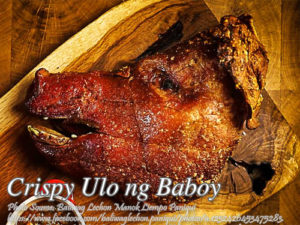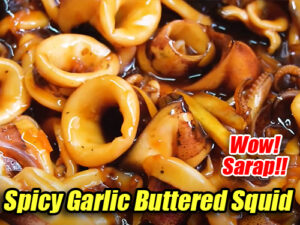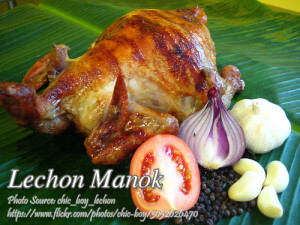Rellenong pusit is one of the many Filipino relleno dishes which is filling or stuffing the fish, pork, poultry or vegetables with meat or vegetable mixture. It can be as small as this squid recipe or as big as a whole roasted pig that can be stuffed. Relleno is actually a Spanish word the means stuffed or filled. Cooking the relleno has variations also like frying, roasting or baking but the common way and the simplest is deep frying.
There’s something truly special about the squid dish. Growing up, this dish was a staple at our family gatherings, and the aroma of freshly cooked stuffed squid still brings me right back to those cozy weekends spent with my cousins and grandparents. Relleno dishes hold a deep tradition in Filipino cuisine, and each family seems to have its own treasured recipe. Rellenong pusit is one of the simplest yet tastiest variations, ideal for beginners and experienced cooks alike. Here, I’ll share how we make this at home, with a few tips passed down from my Tita Flora, who taught me the secrets to getting it just right.
What is Rellenong Pusit?
In Filipino cuisine, relleno means “stuffed” and can be applied to various dishes, from fish and poultry to pork and vegetables. It’s a culinary term borrowed from Spanish, and you’ll find relleno recipes in many former Spanish colonies. For us Filipinos, relleno goes beyond just filling something with a mixture—it’s about combining flavors and textures that transform an ordinary ingredient into something truly special.
Rellenong pusit is a variation that’s close to many Filipinos’ hearts, likely because it’s one of the more accessible stuffed dishes to prepare. Squid is relatively affordable, cooks quickly, and the tender meat makes it the perfect vessel for a savory filling. My mom used to say that it was a “gateway” relleno, a practice dish for the whole family to enjoy.
Preparing the Squid: The Heart of Rellenong Pusit
Start with fresh squid if possible. Preparing the squid can seem intimidating, but it’s actually quite simple once you get the hang of it. To clean, separate the squid’s head and tentacles from the body and remove the beak and ink sac. These steps help ensure the stuffing has the perfect flavor without any bitterness from the ink. My cousin Rico swears that massaging a bit of calamansi juice onto the squid bodies before marinating helps to tenderize the meat and enhance its natural flavor.
Marinating for Maximum Flavor
The marinade is crucial for the flavor in rellenong pusit. After cleaning, soak the squid bodies in calamansi juice and soy sauce for about 30 minutes. This step adds a zesty, savory undertone and, as my Tita Flora says, “prepares the squid to embrace the flavors of the filling.” Marinating is a simple but important step, as it infuses the squid with a light tang that complements the rich filling.
Making the Savory Pork Filling
In our family’s recipe, we go for a classic pork and vegetable filling, though some families add shrimp, mushrooms, or bell peppers. Heat some oil in a pan and sauté garlic and onions until they’re soft and fragrant. This base is essential for building the filling’s flavor. Adding ground pork gives the dish a hearty quality, and stir-frying it until cooked ensures that every bit is packed with flavor.
The next step is adding chopped carrots and the squid’s own head and tentacles, giving the filling extra depth and a subtle sweetness from the carrots. A touch of oregano, salt, and pepper rounds off the seasoning, and I remember my Kuya Jojo adding a dash more pepper for a little kick. Once the filling is ready, remove it from the heat and mix in beaten eggs and a bit of flour to hold everything together.
Stuffing and Frying the Squid
Stuffing the squid is a delicate step that requires some patience. Spoon the filling into each squid body, but don’t overfill—leave a little room as the filling expands slightly when cooked. Once stuffed, close each end with toothpicks to keep the filling from spilling out.
Now, here’s a little tip from my Tita Flora: coat each stuffed squid lightly in flour before frying. This extra layer helps the squid achieve that crispy, golden finish while keeping the filling secure. Deep fry each stuffed squid until golden brown, then place it on a colander or paper towel to remove excess oil. When done correctly, the squid’s outer layer becomes perfectly crisp, while the inside remains tender and flavorful.
Serving Suggestions and Perfect Pairings
Serve rellenong pusit hot with a side of sweet chili sauce, just like we do at home. The sauce’s sweetness balances the savory, slightly tangy flavors of the squid and filling, creating a harmonious taste that’s hard to resist. For a truly Filipino experience, pair it with steamed rice and a side of fresh tomato and onion salad, a classic combination that brings out the squid’s rich, umami taste.
In some regions, it’s also common to enjoy the squid dish with a bit of vinegar on the side. My grandmother swears by a vinegar dip made with crushed garlic and siling labuyo, which adds a spicy kick and helps cut through the richness of the pork filling.
A Dish Rooted in Filipino Tradition
Relleno dishes like rellenong pusit have a special place in Filipino cuisine, often reserved for family gatherings or celebrations. For beginners, this dish offers a way to practice and perfect simple cooking techniques that bring out the best in each ingredient. The dish embodies Filipino cooking—simple, flavorful, and made with heart. And, as my family says, there’s no better way to learn cooking than by preparing dishes like this that bring everyone to the table.
So give this rellenong pusit recipe a try, and don’t be afraid to add your own twist to make it truly yours. It’s a recipe that promises not just a delicious meal but also memories that will linger, just as they have in our family. Enjoy the cooking process, and savor every bite of this classic Filipino delight!
How to Cook Rellenong Pusit (Stuffed Squid)
Ingredients
- 1 kilo medium size fresh squid
- 1 Tbsp. calamansi or lemon juice
- 1 Tbsp. soy sauce
- 2 tsp. garlic minced
- 1 Tbsp. cooking oil
- 1 pc onion chopped
- 1/4 kilo ground pork
- 1/2 tsp. carrots finely chopped
- 1/4 tsp. oregano
- 1/2 tsp. salt
- 1/2 tsp. ground black pepper
- 2 pcs whole eggs lightly beaten
- 1/2 cup all-purpose flour
Instructions
How to cook Rellenong Pusit or Squid Relleno:
- Wash and clean well by removing internal organs, transparent squid bone and ink sac and separate the head with the tentacles from the body of the squid. Remove the beak from the head and chop the head and the tentacles.
- Marinade the squid in calamansi juice and soy sauce for at least 30 minutes.
- Heat oil in a pan and saute garlic and onion until soft.
- Add pork and continue stir frying until the pork in cooked.
- Then add the carrots and chopped squid head and continue stirring until done.
- Season with oregano, salt and pepper. Remove from fire and add in beaten eggs and flour.
- Mix until all the ingredients are well blended.
- Stuff the mixture into each squid then close the ends with toothpicks.
- Roll each squid in flour and deep fry until golden brown.
- Put in a colander after frying to drip excess oil or you can use absorbent paper towels.
- Serve hot with sweet chili sauce.
Notes
Cooking Tips:
Tenderize the Squid with a Marinade
Marinating the squid in calamansi juice and soy sauce not only enhances flavor but also tenderizes the squid, preventing it from becoming tough when fried. The acidity from the calamansi helps break down proteins, making the squid softer. Aim for a 30-minute soak to infuse the squid with a subtle tang and saltiness.Avoid Overstuffing for Better Cooking
When stuffing the squid, leave a small gap at the top as the filling expands slightly during cooking. Overstuffing can cause the squid to split or the filling to spill out, leading to uneven cooking. Using toothpicks to seal the ends will also help keep the filling intact and make frying easier.Lightly Coat with Flour for Crispiness
A light coating of flour before frying gives rellenong pusit a deliciously crisp exterior without overpowering the natural flavor of the squid. This step helps seal the squid, locking in moisture and creating a golden-brown crust. Be careful not to overdo it with the flour, as a thin layer works best.






I want to have a copy